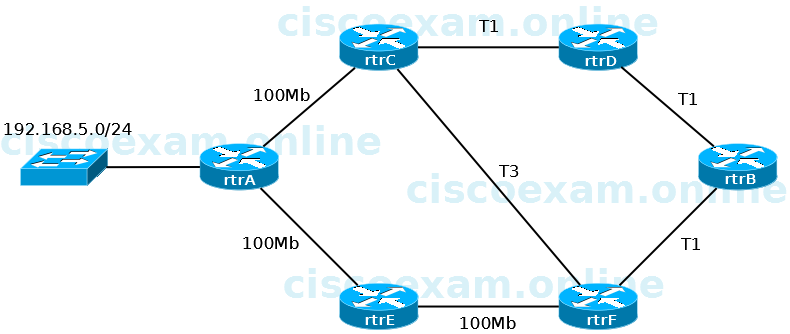Examine the following diagram:

While troubleshooting an OSPF routing problem, you need to determine the cost for Router F to reach the 192.168.5.0 24 network via the best route. What will that cost be?
| A. |
2 | |
| B. |
3 | |
| C. |
7 | |
| D. |
110 |
The best route to the 192.168.5.0/24 network from the perspective of router F will have an OSPF assigned cost of 2. There are three possible loop-free paths to get from router F to the 192.168.5.0/24 network. The default OSPF costs for a 100 MB link, a T1 link, and a T3 link are 1, 64, and 2, respectively.
The three paths and the calculation of their costs are shown:
Router F to Router E to Router A: 1 + 1 = 2
Router F to Router C to Router A: 2 + 1 = 3
Router F to Router B to Router D to Router C to Router A: 64 + 64 + 64 + 1 = 193
Each OSPF route calculates the cost of its path to a network, and passes that value on to the next router, which will then add to it the cost to reach that neighbor. For example, the routing table of Router E would look like this for the route to 192.168.5.0/24:
O 192.168.5.0 [110/1] via <Output omitted>
Router F would add its own cost to reach Router E to the cost of reaching 192.168.5.0/24, resulting in the following output:
O 192.168.5.0 [110/2] via <Output omitted>